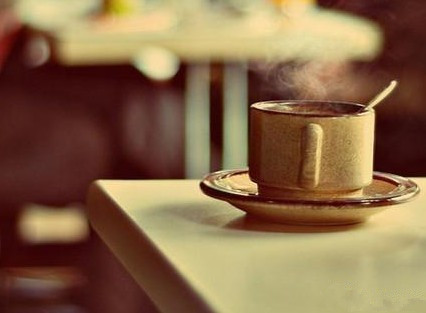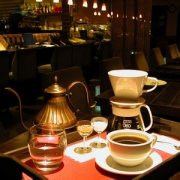Coffee culture of Southeast Asia

I don't know how you are in other parts of Southeast Asia, but I am often at a loss on the streets of Singapore, the corner of Vietnam and a sign in Malaysia. Although the transliteration of such things as "coffee" was used "across the board" by smart predecessors at the beginning of the communication, and there is not much audio-visual hindrance, even if Singaporeans always call coffee by Kopi, which is pronounced from Hokkienese, it is not a big deal, but I am the same as those blond Europeans around me who are very proud of coffee. I do not know what sins Kopi O and Kopi C have suffered. Can be so decisively inexplicably written on the sign of the cafe, and that is usually the location of Espresso or Cappuccino in Starbucks.
Of course, I believe I am luckier than the one around me. At least, after thinking quietly about the gray brain cells, I still understand what happened to the word Kopitiam, which is basically the transliteration of "coffee shop" in Chinese (Taiwanese). As a matter of fact, cafes in Southeast Asian countries such as Singapore and Malaysia already have deep roots in our country, but it is not just the reason for the large number of Chinese. According to K.F.Seetoh, founder of the famous Singapore food strategy Makansutra, in the early 20th century, many local cafes were opened in Singapore, Malaysia and other places, and most of the people who opened and visited the cafes were national people from "Xia Nanyang", and the rich came to New International with full pockets. In order to integrate into the so-called English civilization international, Western civilization was the fashionable trend, and when they gathered in cafes, they accidentally became a kind of civilization.
Of course, there are other advantages in the cafe that satisfy the Chinese who are good at pragmatism. At that time, many of these cafes came from Hainan, China, which was also an interesting thing in Singapore. I heard that people who came to Singapore at that time always had different batches according to the provinces, but the people from Hainan finally arrived. Most of the jobs were already occupied by people from other provinces, so people from Hainan could only take care of the catering industry. In the meantime, Hainanese Chicken Rice will become a local famous dish. Most of these Hainan people who run cafes also enjoy the same experience. when they work on British ships, they often assist in the kitchen and "return to their hometown" from the drifting sea to land. It brought back the British food civilization (which was obviously more popular than Chinese food in Singapore at that time).
In the cafe of that year, there were many seats, and coffee was served with a cheap breakfast or lunch. Although most of the traditional Singapore Kopitiam has now taken on a new look, Bifang Yakun or Killiney Kopitiam have chain operations, but there are still exceptions. For example, the Zhenmeizhen Coffee and Chin Mee Chin Confectionery restaurant on East Coast Road in the East District has always remained the same. In Singapore, which is summer in 3/4, it is obvious that the old cafe was not a place of luxury and pleasure. It's just a transformation of the teahouse. But the menu is probably Western-style pie, and a typical breakfast (which will only flatten your pocket a little bit) consists of a cup of coffee or tea, a hard-boiled egg, served with a plate and soy sauce. The typical way for local people to eat is to beat the eggs into a plate, then mix them with soy sauce and sprinkle with pepper, just like eating pudding.
Another not less is the so-called Kaya Toast, literal translation should be called coconut toast, butter and self-control Kaya sauce is not put on one side for you to take, but spread it thickly beforehand (or only Kaya sauce). Kaya sauce is a classic creation of localization, and this sweet and greasy coconut sauce certainly shows the common interests of all ethnic groups in Asia. The reason that Zhenmeizhen is still busy until now is that the half-cooked eggs there are always good, and Kaya sauce is always the most authentic. Kopi O or Kopi C mentioned above can be regarded as "slang" in practice.
The coffee here is never served properly with milk and sugar. They are generally more processed when they are made, such as stir-frying with corn kernels (or sugar) and butter, which, according to Seetoh, makes the coffee slightly sweet. "in the old days, they were fried in lard, but now they don't do it anymore." In cafes, baristas put processed coffee powder into long, thick "socks", a fabric coffee filter that moistens the taste of coffee in the long run (as if a purple sand pot). Seetoh stressed that although those "socks" have to be washed thoroughly at the end of the day, they may not be clean.
Then, they will use hot water over the "socks" coffee beans, directly into the now condensed milk or milk and sugar cup, there is another cup of "fragrant and strong" coffee. Kopi C refers to coffee with only milk, while C originally comes from Carnation (carnation), a canned milk brand chosen by most Singapore cafes. Although this brand is no longer used in many cafes, this "slang" continues to prevail. Kopi O refers to black coffee (with sugar). It is said that it means "black" in Minnan dialect, Kopi Siutai means less sugar, and Kopi Kosong means coffee without sugar or milk, because kosong means "nothing" in Malay. And if you only say kopi, then condensed milk and sugar are added, because that's how they always add it, and everything else is based on it.
The funniest thing is Kopi Tarik, which refers to the kind of coffee that is poured back and forth in two cups before serving, and Tarik means "rewind". The initial effect is to cool down. Singapore is really too hot for hot drinks, but this method usually makes a lot of foam in coffee, just like cappuccino, so they make it clear that a new product, called Kopiccino, is a genius idea. It is not easy to master these "slang", but we can try to learn. For example, I want a cup of Iced Milk Tea with less sugar, so say, Teh C PengSiutai (really concise and clear), Teh indicates tea, and Peng means ice in Minnan dialect. How, not difficult, that is, some word problems, has not yet risen to the level of grammar. But it can be pointed out that the reason why Southeast Asian cafes like to use condensed milk instead of milk may be because more locally produced robusta coffee from Africa, this kind of coffee is better at resisting diseases and insect pests than Arabica coffee with a long history, but the taste will be more bitter, and it is reasonable that heavy flavors naturally need to be recuperated.
Important Notice :
前街咖啡 FrontStreet Coffee has moved to new addredd:
FrontStreet Coffee Address: 315,Donghua East Road,GuangZhou
Tel:020 38364473
- Prev

You can't face life without a cup of coffee in the morning.
Only on the coffee table can you see the humorous side of the Europeans. Gossip is spread on the coffee table, and if there is no coffee in the interior of Europe, everyone's life will be half as bad. When a Venetian merchant who only wanted to make some money introduced coffee to the interior of Europe in the 17th century, he did not know how the mysterious black powder of this small bag had completely changed Europe in the next few centuries.
- Next

Hand-made coffee withdrawal "slowly refined" coffee life
Weigh the roasted fresh coffee beans, pour them into the bean grinder, the movement runs, and the fragrance of beans is instantly wanton opening in the air. I like to grind beans and make coffee in the early morning. The flow of the thin-mouth pot is slow and graceful, as if gently opening the curtain of the day. I always feel that the matter of making coffee by hand has an awe-inspiring sense of ritual, as if waiting for the sunrise to be as excited, small and surging. Every
Related
- How did the Salvadoran coffee industry develop in Central America?
- What exactly does the golden cup extraction of coffee mean?
- The Origin of Coffee flower
- [2023 Starbucks World Earth Day] there are more meaningful things besides free Starbucks coffee!
- What kind of coffee is there in Spain? 9 Flavors of Spanish Coffee
- Aromatic African coffee| Kenya's coffee culture and historical production area
- Liberica Coffee Bean knowledge: the characteristics of Liberian Coffee beans of the three original species of Coffee beans
- The origin and formula of Spanish latte introduces the taste characteristics of Bombon coffee in Valencia, Spain.
- How to adjust the solution of over-extracted coffee
- What is the tasting period of coffee beans? What is the period of coffee and beans? How should coffee wake up and raise beans?

